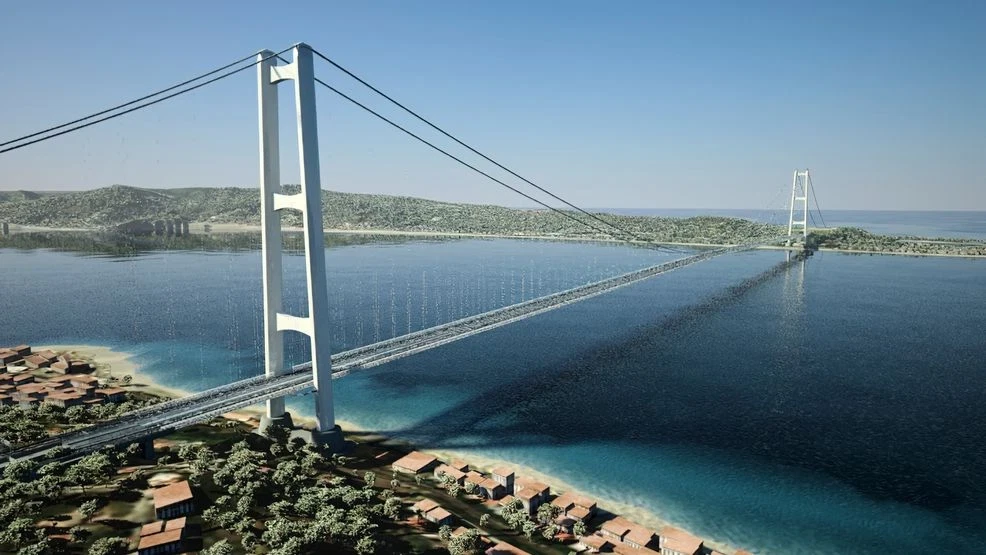In a landmark decision, Italy’s government has officially approved the construction of a suspension bridge spanning the Strait of Messina—linking the mainland to Sicily and set to become the longest single-span suspension bridge in the world.

Project Highlights
- Scale & Engineering Excellence
The bridge will stretch approximately 3.7 kilometers (2.3 miles) in total, featuring a 3.3 km suspended span—surpassing the current record held by Turkey’s Çanakkale Bridge.
It will include six lanes for traffic, two railway tracks, and a 60-meter-wide deck, supported by twin towers reaching 399 meters in height, with suspension cables made of over 44,000 wires each. The structure is engineered to withstand high winds, seismic activity, and extreme marine conditions, with a projected 200-year lifespan. - Infrastructure & Connectivity
Motorists could see crossing times shrink from up to 100 minutes by ferry to just 10 minutes. Trains will similarly gain, reducing travel time by around two-and-a-half hours. - Economic & Strategic Impact
The €13.5 billion (approx. $15.5 billion) project is expected to generate up to 120,000 jobs annually, supporting southern Italy’s economic revitalization.
The government may classify the bridge as dual-use (civilian and strategic) infrastructure, contributing toward NATO’s defense spending benchmarks, and transforming it into a crucial corridor for rapid deployment in Europe’s southern flank.
Timeline & Leadership
- Historical Revival: First conceptualized during ancient Rome, the project has resurfaced multiple times since 1969. The current push was renewed in 2023 by the administration of Prime Minister Giorgia Meloni.
- Next Steps: Preliminary groundwork could begin in late 2025 pending court audit clearance, with full construction projected to start in 2026 and completion expected by 2032–2033.
Challenges & Opposition
The project faces considerable resistance from environmentalists citing risks to bird migration, marine ecosystems, and the seismic instability of the region. Critics also demand stricter safeguards against mafia infiltration in the supply chain. Over 600 academics have opposed the dual-use classification, warning it may require military-grade resilience and potentially expose the bridge to strategic threats.
At a Glance
| Aspect | Detail |
|---|---|
| Length | 3.7 km total, 3.3 km suspended span |
| Purpose | Vehicular + railway, civilian + strategic infrastructure |
| Budget | €13.5 billion |
| Employment | Up to 120,000 jobs/year |
| Timeline | Groundwork late 2025 → Completion by 2032–2033 |
| Concerns | Environmental, seismic, criminal oversight, security risks |
This bridge is poised to become a defining engineering feat and a strategic catalyst for Southern Italy—if it overcomes its social, environmental, and political hurdles.
















